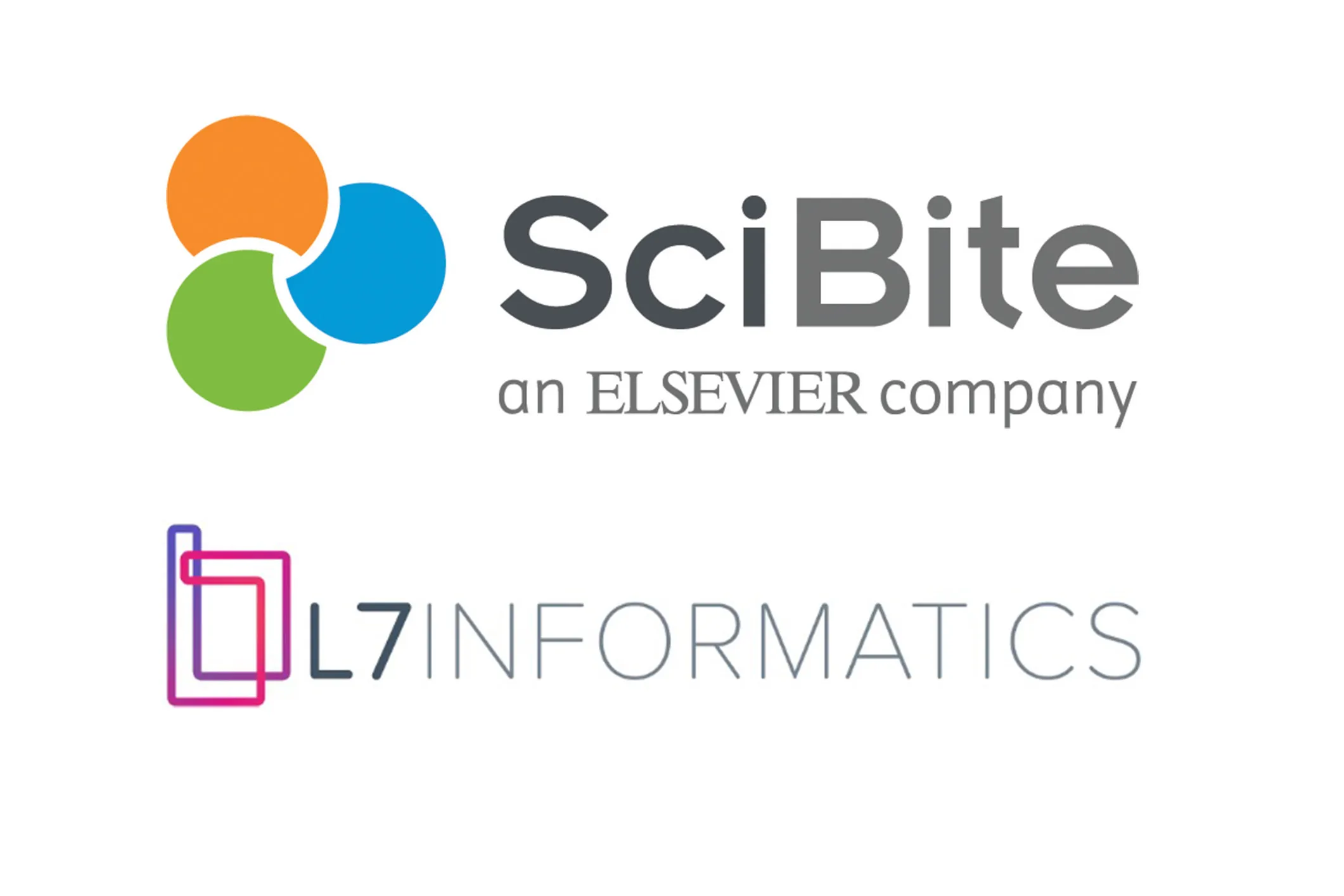
Streamlining data-intensive scientific workflows through FAIR data
 |
 |
Streamlining data-intensive scientific workflows and supply chains through FAIR data, data models and applications – A collaboration between L7 Informatics and SciBite. With increasingly complex manufacturing and supply chains in the life sciences, there is a requirement for flexible and extensible tools to support data management.

Introduction
With increasingly complex manufacturing and supply chains in the life sciences, there is a requirement for flexible and extensible tools to support data management. Through the partnership, L7 Informatics and SciBite are leveraging FAIR (Findable, Accessible, Interoperable, and Reusable) to deliver an ontology-backed data unification solution to address this unmet and growing need. This connection, and use of both systems, will help you end up making use of your data and providing limitless data intelligence.
Shifting data needs within the Life Sciences
The utilization of big data in the life sciences remains a significant hurdle, hampering scientific progress and the realization of data value. Unstructured data is siloed in specialized applications used for specific tasks within organizations. There is a prevalence of legacy data, and downstream applications for this data were also not considered when it was captured. Layered on top of this is a lack of standardized terminology within the life sciences, impeding search, analysis, and extraction of meaningful insight from the data.
The biopharma industry is adapting to the pressures of dwindling drug pipelines, ever-increasing development costs, and the complexity of new biologic therapies and personalized medicine. Pharma companies are bolstering pipelines through mergers and acquisitions and increasingly outsourcing development and manufacturing to contract development and manufacturing organizations (CDMOs).

This outsourcing model is streamlining processes and shortening the path to market; something that was exemplified during the development of COVID-19 vaccines. This outsourcing model is predicted to grow alongside a transition from fee-for-service models to more strategic partnerships with biopharma. This was seen during the COVID pandemic, with AstraZeneca announcing large partnerships with Emergent Biosolutions, Catalent and Lonza.
This trend in outsourcing development and manufacturing has the potential to exacerbate existing problems with data access and utilization by introducing data silos. Increasingly complex manufacturing processes involving genomic profiling require complex workflows and supply chains.
Specialized teams work in different parts of the workflow or supply chain, needing tools to support the capture and management of data associated with specific parts. Participants in these workflows may also be geographically separated and may work in different organizations. How is the industry going to address this, and what tools will be required?
Leveraging FAIR
Supporting complex workflows and supply chains requires dedicated tooling, capturing data with downstream utility in mind. The concept of FAIR (Findable, Accessible, Interoperable, and Reusable) provides an ideal framework for capture and reusability, but how are L7 Informatics and SciBite implementing this to address these challenges?
Through Enterprise Science Platform (L7|ESP) L7 has taken a platform approach to support these complex workflows and supply chains, providing a unified view of data across the entire process. Through the application of FAIR principles not only to data but to data models and applications, L7 has delivered a composable platform that is highly configurable from simple reusable components, streamlining the implementation and making it highly extensible.
Leveraging FAIR through partnership
Through the partnership, SciBite is supporting L7 in delivering its vision of FAIR within L7|ESP. As an industry leader in semantics, SciBite supports the digital transformation strategies of many leading pharma and biotech organizations. Employing a rule-based approach through the application of ontologies to structure data and provide machine-readable clean data for downstream applications, such as robust search, analytics, or knowledge graphs.
CENtree, SciBite’s proven and established ontology management tool, is utilized by L7 to develop dedicated ontologies aligning with public ontologies. These support specific workflows within L7|ESP. L7’s subject matter experts can centrally manage and extend these public ontologies or develop new ontologies from scratch for specific domains or applications. These ontologies managed by L7 in CENtree are distributed to customers within L7|ESP. Existing CENtree users can also directly use their own ontologies within L7|ESP.
Ontologies are used within L7|ESP to capture semantically aware, standardised data by populating pick lists. These guide the user to enter ontology-backed terms upon data entry. Since these ontologies apply an explicit, unique meaning and description to scientific terms, this ultimately brings semantic intelligence to L7|ESP.

So, for example, rather than being a random string of letters, the term ‘NIDDM’ can be understood as referring to the indication ‘non-insulin-dependent diabetes.’
Ontologies also encapsulate the hierarchical relationships between terms, such as that multiple sclerosis is an autoimmune disorder. This is key to data interoperability and enabling robust search and analytics over this data and extracting scientific insight.
The composability of L7|ESP makes it quick to deploy using reusable components, including data models in the form of ontologies. By embedding CENtree directly into L7|ESP, users can collaboratively extend these ontologies and tailor them to their own data and workflows.
CENtree provides a complete governance framework, controlling who can edit or approve edits to ontologies and handling this entire process. This provides a complete audit trail of when edits to the ontology were made, and by whom and offers the ability to roll back these changes. In addition, compartmentalizing changes in public ontologies from user edits allows the public ontologies and user-defined edits to evolve independently.
Summary
Combining L7|ESP and SciBite’s CENtree ontology management solution provides L7|ESP users with a powerful, ontology-backed data capture and unification tool to support complex life science workflows and supply chains. It is quick to implement, and extend and provides a powerful data management tool aligning with FAIR data principles.
Related articles
-
SciBite and L7 Informatics partner to deliver data ontology search through L7|ESP™


SciBite and L7 Informatics announce joint partnership to support discovery and collaboration in the life sciences.
Read -
Delivery of precision medicine through alignment of clinical data to ontologies


Precision medicine is changing the way that we think about the treatment of disease, moving from broad-acting therapies to therapies tailored to the individual patient. This increasingly relies on real-world data (RWD), encompassing a diverse range of sources, spanning multi-omic molecular characterisation of the patient’s condition, clinical presentation, treatment, and broader medical histories.
Read
How could the SciBite semantic platform help you?
Get in touch with us to find out how we can transform your data
© Copyright © 2024 Elsevier Ltd., its licensors, and contributors. All rights are reserved, including those for text and data mining, AI training, and similar technologies.

